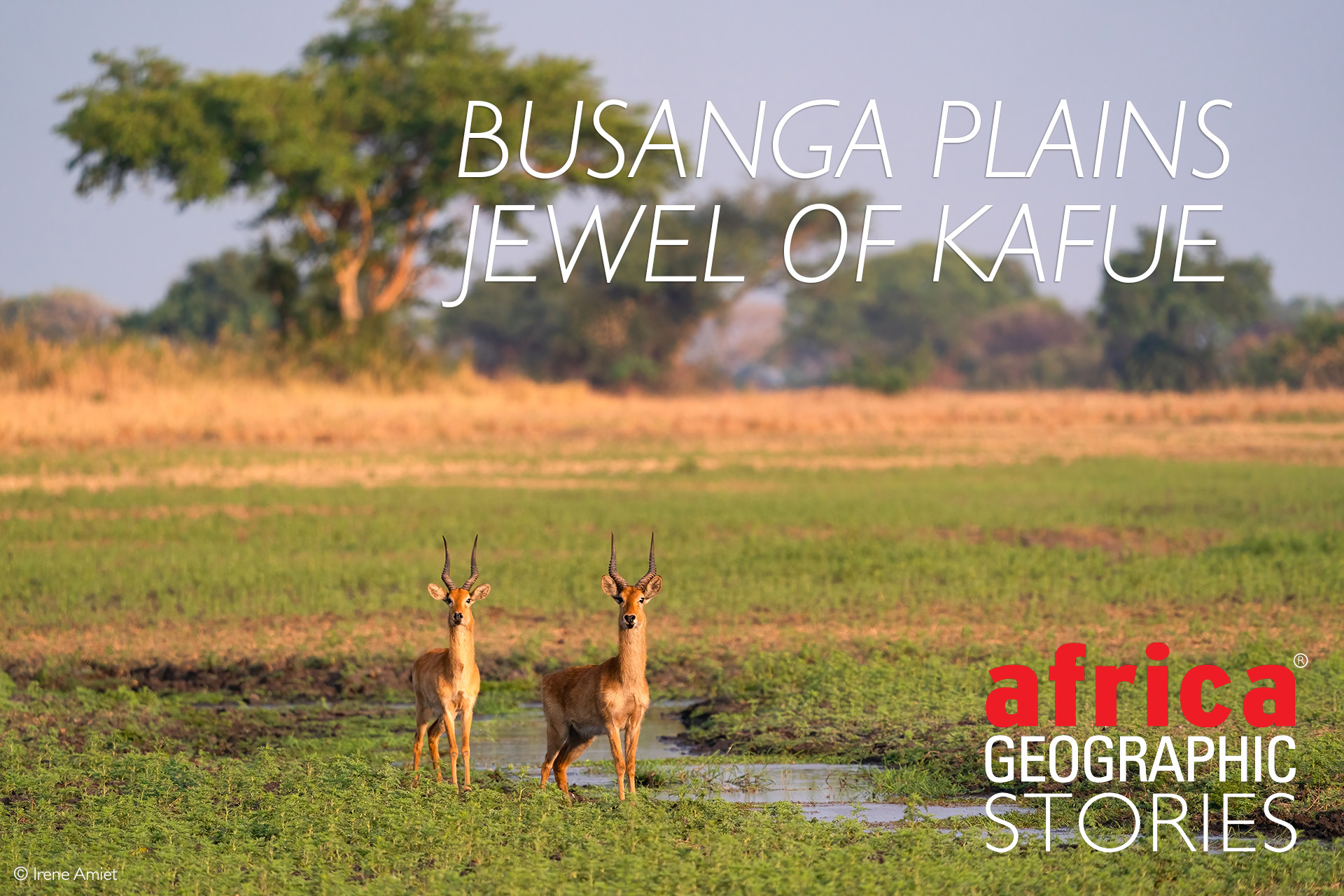
Teeming with wildlife


The horizon as seen from Busanga Plains stretches in every direction and the lowering sun paints the grasslands with a gilded brush this late afternoon. Every lechwe’s horn, every stone is set aglow. The hippos’ eyes catch the metallic light as does the spray their crashing jaws create. Two male puku stand still and alert by the last of the water, their eyes trained to a spot beyond our vehicle.
Despite the cover of tall papyrus reeds, the antelopes sense danger.
Hidden from their sight are no less than twenty lions. Three generations lay outstretched on their backs, paws in the air as they roll around before falling back into a digestive coma. This pride includes such Busanga legends as the lion referred to by some as “Killing Machine”, a grandmother now, and her daughter, “Princess” as well as their sub-adult-offspring and smaller cubs from a different litter.
One cub raises on her haunches, waiting patiently for the puku to relax and lower their heads to drink before she charges at them, just as the adults have taught her. The attempt is half-hearted and the puku scatter safe of striking distance, blowing sharp warning calls through their nostrils.
This scene plays out in an area of Zambia’s Kafue National Park which is over 90 air-minutes away from the big cities of Lusaka and Livingstone, where we spent a few days exploring the plains. Stretching over 720km², Busanga Plains is at the top of the list when it comes to game viewing – as there is a low ratio of human visitors to wildlife.

The plains are only accessible between April and October when the floods have receded enough to allow for road transport but those four months offer some of the best game viewing in Southern Africa. Thousands of red lechwe and puku assemble along the receding water channels which shelter hippos and catfish.
The ancient head of a crocodile breaches the water, snapping at some unsuspecting jacana. Crowned cranes and yellow-billed storks shake their wings in airborne retreat before carefully stalking back to their fishing spot.
A southern ground-hornbill glides past like a marionette from a puppet show taken flight. Surrounding the plains are woodlands which shelter elephants during the heat of the day. The woodlands allow ample foliage for the browsers, and even for the grazers such as roan and sable antelope who may also take a selective nip here and there. And, there are plenty of spots for hyenas to build their dens. We spot all of these during a four-hour morning drive.
This game-rich habitat makes Busanga a veritable paradise for lions, many of which have been captured in documentary series such as Swamp Lions and Kings of Busanga Plains.
Early one morning, we get to witness the pride male “General” follow a female referred to as “Nala”. He stalks her along thin-stemmed acacia trees and across open plains, his mane coiffed by the breeze, a silhouette fit for a movie. Unfortunately, his intended catches sight of a young intruder who piques her interest. She makes a dash for the stranger with the golden coat, General in hot pursuit. The youngster sees the battle-scarred elder and runs for his life. Soon after, Nala’s focus is back on the old and trusted General who pursues her for three hours with intermittent rest to mark his territory.
This time of year, the plains are thirsting for water, and the clouds assemble at night only to disperse by morning. Thunder can be heard in the distance, but the sun breaks through once more. As there are no geographical restrictions, a wind often swipes across the plains, which in the warmer months can feel as if a blow-dryer was aimed at one’s face.
 Considering Busanga Plains for your next African safari? Check out our ready-made safaris to Busanga Plains here. Alternatively, see our other safaris here.
Considering Busanga Plains for your next African safari? Check out our ready-made safaris to Busanga Plains here. Alternatively, see our other safaris here.
As the heat rises, we leave the lions, who have found a shaded spot on one of the raised patches of shrubbery and palm trees – which would be islands in the wet season.
When the sun sets, more hippos start grunting, competing for the deepest water, and we watch the grenadine red skies melt into darkness, with the occasional opened jaws breaking the dusky silhouette. Their grunts will accompany us throughout the night and blend with the lion’s deep call as we lay in our tents, immersed in this truly remote wilderness, the truest luxury of a safari experience.
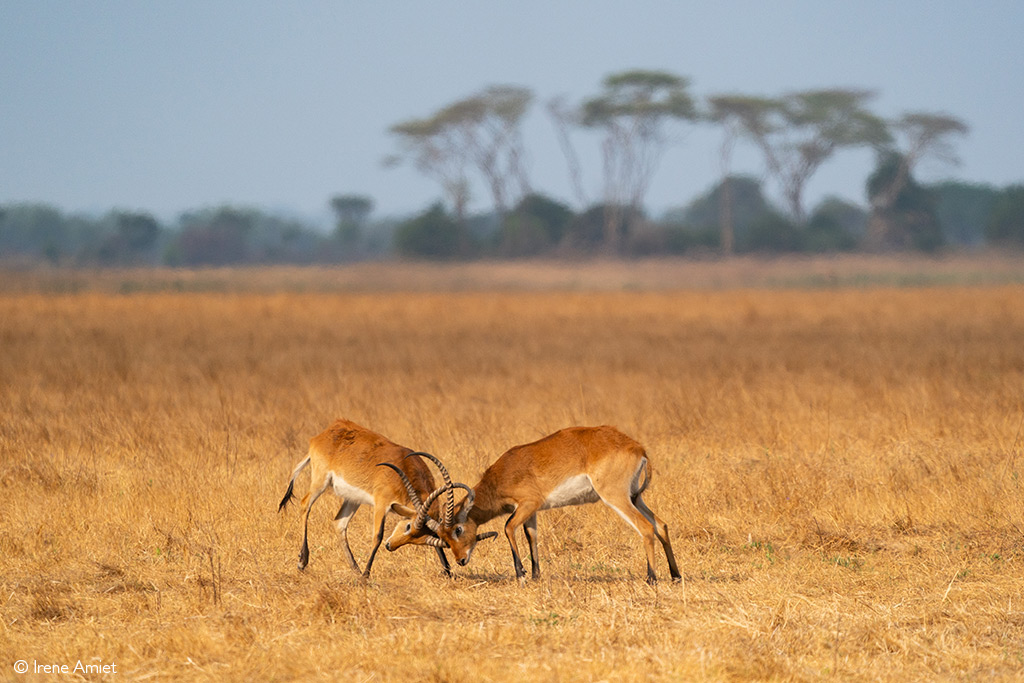
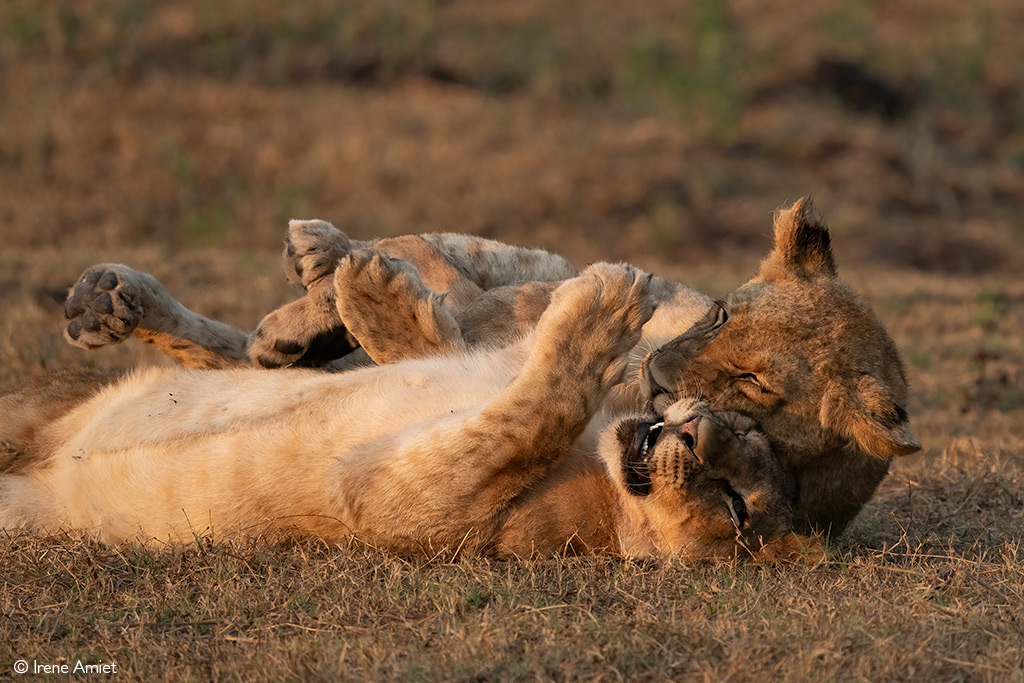

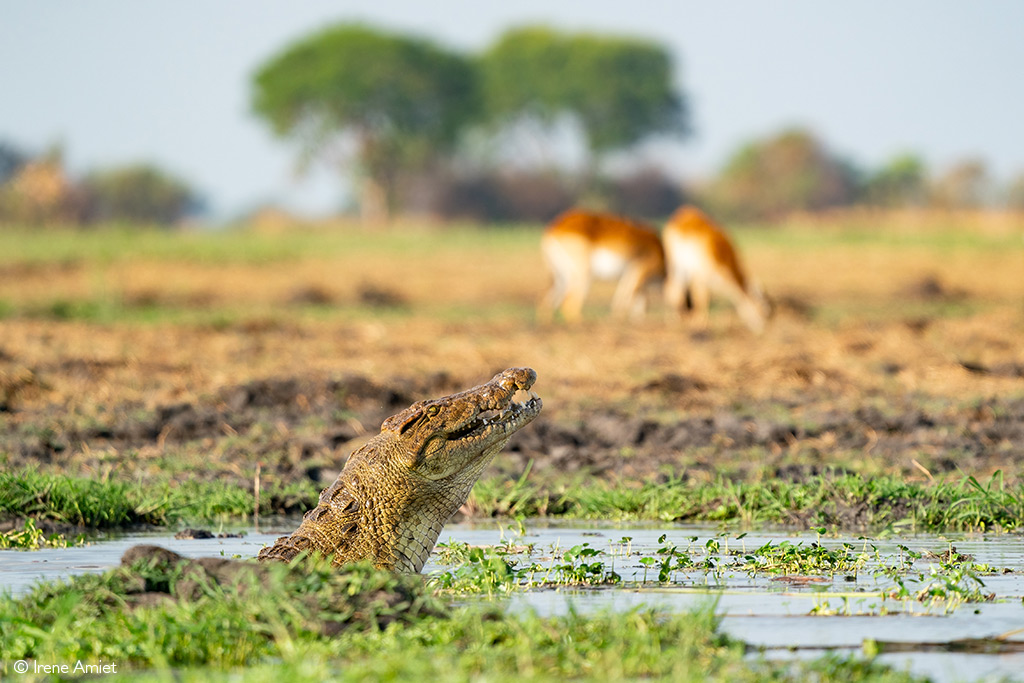

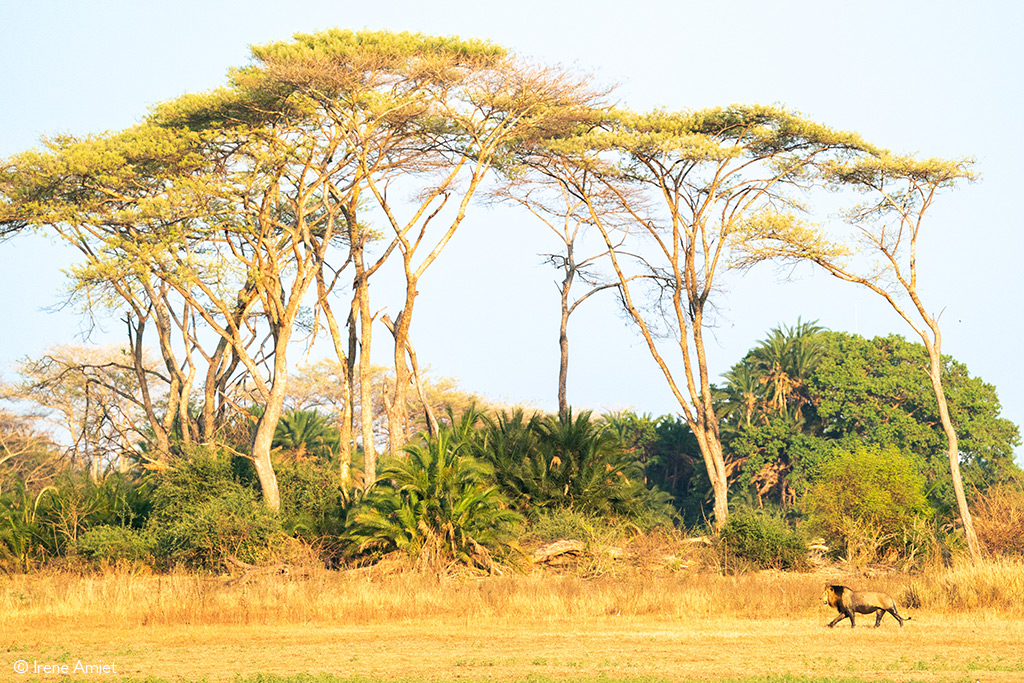
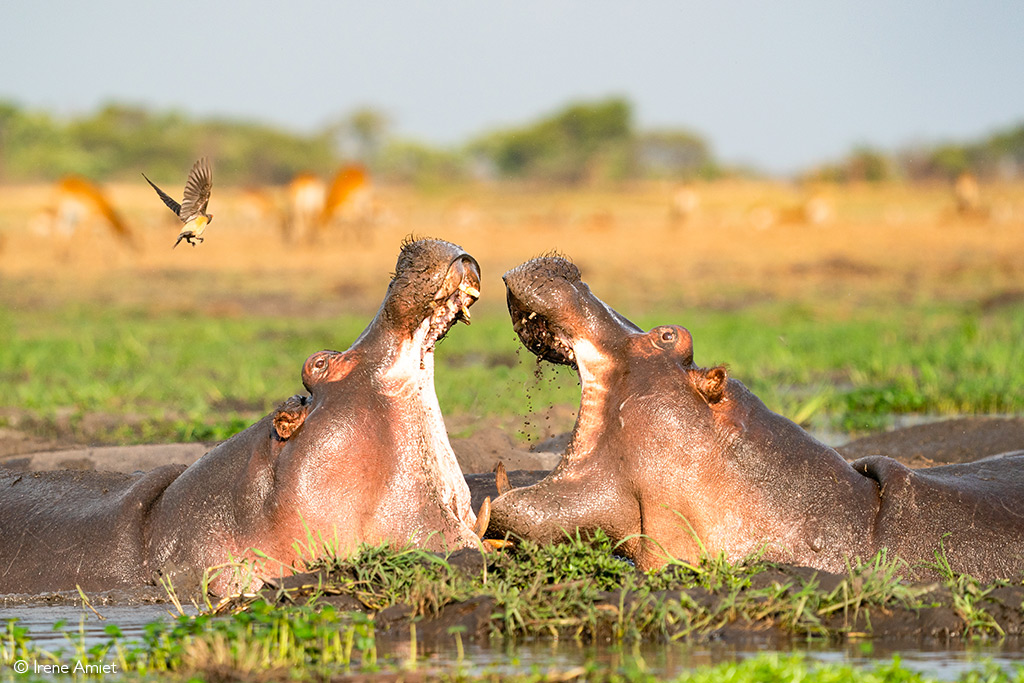
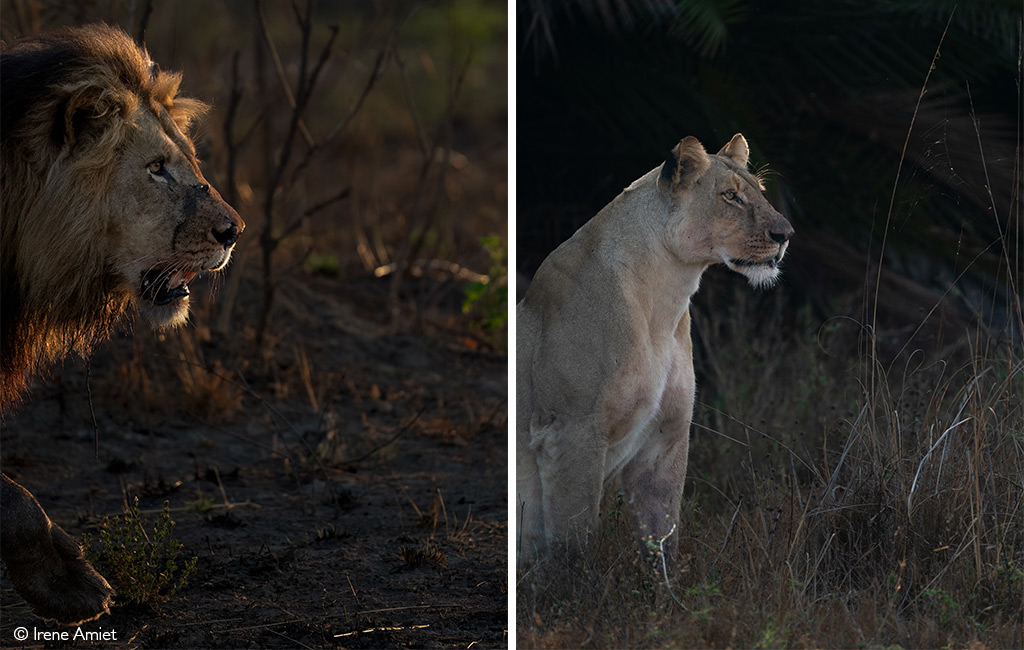


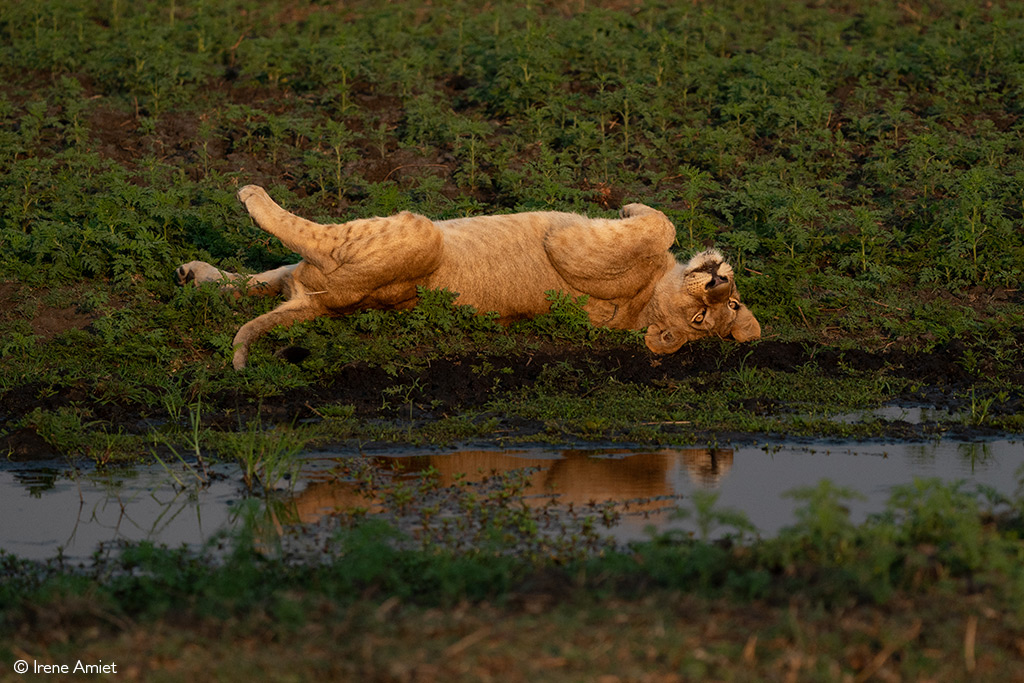


 DID YOU KNOW that African Parks offers safari lodges and campsites where 100% of tourism revenue goes to conservation and local communities? African Parks has been responsible for the management of Kafue National Park since 2022. Kafue became the 20th park in African Park’s portfolio of stabilised and rehabilitated protected areas across the continent. Find out more and book your African Parks safari.
DID YOU KNOW that African Parks offers safari lodges and campsites where 100% of tourism revenue goes to conservation and local communities? African Parks has been responsible for the management of Kafue National Park since 2022. Kafue became the 20th park in African Park’s portfolio of stabilised and rehabilitated protected areas across the continent. Find out more and book your African Parks safari.
Resources
- To see more pics from Irene Amiet, check out @ireneamiet on Instagram
- Read another colourful travel diary from Busanga Plains here.
- Kafue National Park is Zambia’s oldest and largest national park – known for sweeping plains and wetlands, and abundant and unique wildlife. Read more about Kafue here.
- Nanzhila Plains is a hidden safari gem – also found in Kafue National Park. Read more about Nanzhila Plains here.
To comment on this story: Login (or sign up) to our app here - it's a troll-free safe place 🙂.![]()




